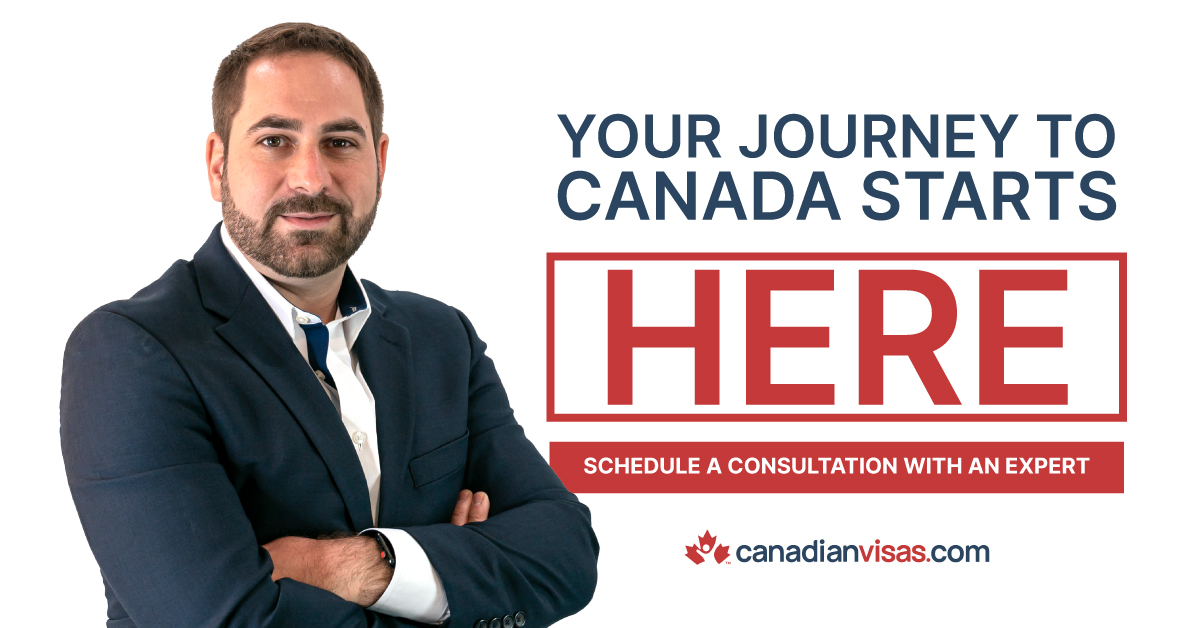
Jun 12, 2024 | Becoming a Sponsor, Blog, Immigrate to Canada, Immigration, Immigration Reform, In the News, New Laws
Recent trends suggest that Express Entry candidates meeting the eligibility requirements for category-based draws are more likely to receive an ITA even with a Comprehensive Ranking System (CRS) score below 500. CRS scores represent a point value assigned to each candidate based on human capital factors. These scores are crucial for Express Entry draws, as the cut-off score determines the minimum CRS score required for an ITA invitation in a particular draw.
Challenges of High CRS Cut-Off Scores in General Draws
Many immigration candidates have expressed concerns regarding high CRS cut-off scores in general Express Entry draws. In 2024, none of these draws have had a cut-off score under 524. For comparison, in 2023, 17 out of 25 non-category-based draws had cut-off scores lower than 518.
Benefits of Category-Based Draws
IRCC has conducted eight category-based draws so far in 2024. Every single one of these draws has had a significantly lower CRS cut-off score compared to general draws this year, with a minimum reduction of 33 points. The specific cut-off scores for these category-based draws have ranged from 336 to 491.
Eligibility for Category-Based Selection Draws
To be eligible for an ITA through a category-based draw, candidates must meet specific criteria that vary depending on the category. These categories include French language proficiency, healthcare professions, Science, Technology, Engineering, and Mathematics (STEM) professions, trades occupations, transport occupations, and agriculture and agri-food occupations. More details on these categories and their eligibility requirements can be found on the dedicated IRCC webpage.
Focus on French Language Proficiency
In 2024, IRCC has prioritized French language proficiency, anticipating it to be the leading category for ITAs issued through category-based draws this year (approximately 30% of total ITAs). To qualify under this category, candidates must have a minimum Canadian Language Benchmarks (CLB) score of 7 in all four language abilities (reading, writing, listening, and speaking) on the Niveaux de compétence linguistique canadiens (NCLC) test.
Focus on Specific Occupations
This year, IRCC has targeted immigration candidates with work experience in five key industries: healthcare, STEM, trades, transport, and agriculture and agri-food. For all these categories, a minimum of six months of continuous, full-time or equivalent part-time work experience in the past three years is required, obtained in either Canada or abroad. The specific National Occupation Classification (NOC) codes eligible for each category may vary.
Who Can Benefit Most?
Assuming they meet the eligibility requirements, foreign nationals with CRS scores below 500 (based on the lowest general draw cut-off score in 2024, which was 524) are most likely to benefit from category-based draws. This includes both candidates whose scores fall near 500 and those who wouldn’t qualify for an ITA otherwise, even with a CRS score increase.
Alternatives for Ineligible Candidates
For candidates aiming to improve their CRS scores for general draws without changing occupations, there are a few strategies:
- Language Skills: Maximizing language proficiency can significantly increase CRS points (up to 310 points when combined with other factors like education). Scoring above the minimum Canadian Language Benchmark (CLB) requirements can be beneficial. Additionally, proficiency in Canada’s second official language (French) can grant further points.
- Education: Depending on where your educational credentials were obtained (inside or outside Canada), education can contribute up to 250 CRS points. Having Educational Credential Assessments (ECAs) completed for foreign credentials or pursuing further education can improve your score.
- Work Experience: The level of your NOC and the duration of your work experience can influence your CRS score. Assessing your current work experience to see if it aligns with a skilled NOC and the total time spent working can help you gain more points. Gaining additional work experience can also be a strategy.
- Changing the Principal Applicant: In some cases, couples applying through Express Entry might benefit from reviewing their CRS scores. If a spouse or common-law partner has a higher CRS score than the initially selected principal applicant, switching the principal applicant on the Express Entry profile can improve the overall score and increase the chance of receiving an ITA. Alternatively, each spouse could submit a separate Express Entry profile.
Important Considerations for Category-Based Draws
While category-based draws offer an opportunity for some candidates with lower CRS scores, there are some crucial aspects to consider:
- Limited Number of ITAs per Draw: Compared to general Express Entry draws, category-based draws typically offer a smaller number of ITAs. This can increase competition within each specific category.
- Specificity of Categories: The categories for these draws target specific professions or language skills. Candidates who don’t perfectly align with these categories won’t be eligible, even with a lower CRS score.
- Fast-Moving Process: Express Entry draws, including category-based ones, happen regularly. Staying informed about upcoming draws and their requirements is essential to ensure you can submit an application when eligible.
Category-based selection draws present a valuable opportunity for specific Express Entry candidates with lower CRS scores, particularly those in high-demand professions or with strong French language skills. However, careful consideration of eligibility requirements, competition levels, and the fast-paced nature of Express Entry draws is crucial for maximizing your chances of success.

https://consultations.canadianvisas.com/canadianvisas-generalconsultation

Jun 7, 2024 | Becoming a Sponsor, Blog, Immigrate to Canada, Immigration, Immigration Reform, In the News, New Immigration Programs, New Laws, Skilled Workers, Work Permits, Working In Canada
The Canadian government, through Immigration, Refugees, and Citizenship Canada (IRCC), is offering a new pathway for highly skilled foreign workers to contribute to the country’s innovative businesses. Launched on April 15, 2024, the Innovation Stream Pilot is a two-year initiative designed to streamline the work permit process for select Canadian companies participating in the Global Hypergrowth Project (GHP).
Fast-Track Work Permits for High-Demand Skills
This pilot program exempts eligible employers from the requirement to conduct a Labour Market Impact Assessment (LMIA) for specific positions. LMIA is a process that verifies if hiring a foreign worker will negatively affect Canadian employment opportunities. The Innovation Stream Pilot prioritizes filling high-skill roles (as defined by National Occupational Classification or NOC levels 0, 1, 2, or 3) with qualified foreign talent.
Benefits for Workers and Families
This new Innovation Stream Pilot will allow certain Canadian companies to bring in highly skilled foreign workers on work permits without needing an LMIA (Labour Market Impact Assessment). Jobs in National Occupational Classification (NOC) categories 0, 1, 2, or 3(Training, Education, Experience, and Responsibilities) are considered high-skilled jobs. Furthermore, family members of these foreign workers will be eligible for an open work permit, allowing them to work for almost any employer in Canada. The Innovation Stream is scheduled to continue for two years, ending on March 22, 2026, unless there are any changes.
Program Duration and Eligibility
The Innovation Stream Pilot is currently scheduled to run until March 22, 2026. To be eligible, foreign workers (whether inside or outside Canada) must possess a valid job offer from a company participating in the GHP. The offered position must fall under an NOC 0, 1, 2, or 3 category and meet the prevailing wage standards for the specific region. Additionally, immigration officials will assess the applicant’s qualifications to ensure they align with the job requirements.
- Employers: Companies participating in the Global Hypergrowth Project are eligible to hire through the Innovation Stream.
- Workers: Foreign nationals with job offers in high-skilled occupations (National Occupational Classification categories 0, 1, 2, or 3) can apply from within or outside Canada. These categories typically require extensive education, training, or experience.
- Family Members: Spouses and dependents of approved workers will be eligible for open work permits, allowing them to work for any employer in Canada.
Companies Participating in the Global Hypergrowth Project
As of today, eight Canadian companies are authorized to hire foreign talent under the Innovation Stream Pilot without the LMIA requirement. These companies include:
- Ada Support Inc.
- AlayaCare
- CellCarta
- Clarius Mobile Health
- Clio
- Duchesnay Pharmaceutical Group (DPG)
- Lightspeed Commerce
- Vive Crop Protection
The Global Hypergrowth Project: Fostering Innovation
The GHP is a government initiative designed to accelerate the growth of Canadian businesses. It provides participating companies with customized support and resources tailored to their specific needs. This not only empowers these companies to thrive but also creates a dynamic environment that attracts top international talent.
Employer-Specific Work Permits Explained
An employer-specific work permit restricts the holder’s employment to the terms outlined in the permit document. These terms typically specify the employer’s name, duration of employment, and authorized work location.
The Innovation Stream Pilot represents a significant step by the Canadian government to attract skilled foreign talent and bolster the nation’s innovation ecosystem. This program offers promising opportunities for both Canadian businesses and qualified foreign workers seeking to contribute their expertise to Canada’s economic growth.

https://consultations.canadianvisas.com/canadianvisas-generalconsultation

May 28, 2024 | Becoming a Sponsor, Blog, Immigrate to Canada, Immigration, Immigration Reform, In the News, New Laws
Immigration, Refugees and Citizenship Canada (IRCC) issued invitations to potential sponsors for the 2024 Parents and Grandparents Program (PGP) on May 21st, 2024. This program facilitates family reunification by allowing Canadian citizens and permanent residents to sponsor their parents and grandparents for permanent residency in Canada.
Eligibility for the 2024 PGP Intake
For the 2024 intake, IRCC will only be considering individuals who submitted their interest to sponsor forms in 2020.This is the fourth consecutive year with this eligibility restriction. Invitations were sent via email on a random basis starting May 21st, 2024.
Steps to Take After Receiving an Invitation to Apply (ITA)
If you receive an ITA for the PGP, it is crucial to act promptly as the application window is typically limited to 60 days.Here’s a breakdown of the key steps involved:
-
Gather Required Documentation: Carefully review the document checklist provided within the ITA. This will likely include proof of identity, your relationship to the sponsored individual(s), financial documentation, medical examinations, police certificates, and any other supporting documents outlined in the ITA.
-
Complete Application Forms: Ensure all application forms are filled out accurately and comprehensively. Double-check all information before submission to minimize the risk of delays or errors.
-
Process Fee Payment: Submit the required processing fees for both the sponsorship application and the permanent residency application for the sponsored individual(s). Failure to settle these fees will result in application rejection.
-
Online Application Submission: Once you have gathered all necessary documents, completed the application forms, and paid the processing fees, submit your application electronically through the designated government portal within the allotted timeframe.
-
Application Processing: Upon submitting your application, you will receive a confirmation message. Processing times for PGP applications can vary. It is recommended to exercise patience and await further communication from IRCC.
-
Potential Additional Information Requests: During the processing stage, IRCC may request additional documentation or information. Respond promptly to any such requests to avoid processing delays.
-
Final Decision on Application: You will be notified of the final decision on your application. If approved, you will receive instructions on the next steps, such as submitting your passport for visa issuance. If your application is rejected, you may have the right to appeal depending on the reason for rejection.
Alternative Option: Super Visa Program
If you were not selected for the PGP this year, the Super Visa program can be a viable alternative. This program allows parents and grandparents to visit Canada for extended stays of up to five years at a time, with the possibility of a two-year extension. Unlike the PGP, applications for the Super Visa program can be submitted throughout the year. IRCC also targets a faster processing timeframe of approximately 112 days for Super Visa applications.
Seeking Professional Assistance
Considering the complexities involved in the PGP application process, it is highly recommended to seek professional guidance from an immigration lawyer or consultant. We can assist you with navigating the application process, ensuring all requirements are met, and maximizing your chances of a successful outcome.

Jan 31, 2024 | Becoming a Sponsor, Blog, Business Immigration, Canadian Employers, Citizenship, Complete Representation, Express Entry, Family Immigration, Help with Inadmissibility, Immigration, In the News, New Immigration Programs, Provincial Nominee Program
As of January 30th, 2024, you have a new choice for proving your English proficiency for Canadian immigration – the Pearson Test of English (PTE) Core test! This computer-based exam is now accepted for most immigration pathways, except the Student Direct Stream (SDS).
This opens up a new, potentially faster and more accessible option for individuals seeking to demonstrate their English proficiency and pursue their Canadian dream.
What is the PTE?
The PTE Core is a computer-based English test designed specifically for Canadian immigration applications. It assesses your everyday English skills in speaking, writing, reading, and listening within a two-hour timeframe. With over 400 testing centers globally, it offers convenient accessibility.
This test is available at Pearson’s global testing centers and is fully digital, using the latest AI technology for scoring and biometric data collection for enhanced security measures, as well as voice recognition software for the speaking element of the test.
PTE is already accepted by the UK, Australian, and New Zealand governments, and more than 90% of universities in Canada.
Who can benefit from the PTE Core?
This new test caters to a wide range of immigration pathways, excluding only the Student Direct Stream (SDS). So, whether you’re aiming for a Provincial Nominee Program (PNP) nomination, applying through an Express Entry managed program, or seeking Canadian citizenship, the PTE Core could be your key to language test success.
Comparing PTE Core to the Canadian Language Benchmark (CLB)
The PTE Core aligns with the Canadian Language Benchmark (CLB) and joins five other accepted language tests:
- CELPIP General Test (English)
- IELTS General Training (English)
- TEF Canada (French)
- TCF Canada (French)
Each test assesses the same four skills, but specific program requirements may vary. For instance, Express Entry candidates under the FSWP need a minimum CLB 7 in all skills, while FSTP candidates require CLB 5 in speaking & listening and CLB 4 in reading & writing. The Canadian Experience Class (CEC) has different requirements based on the NOC skill level of your job.
| Skill |
PTE Core Score |
CLB Level |
| Speaking |
50-79 |
7 |
| Writing |
50-79 |
7 |
| Reading |
50-79 |
7 |
| Listening |
50-79 |
7 |
Choosing the right test:
Selecting the most suitable language test for your immigration journey depends on various factors, including your preferred testing format, budget, desired timeframe for results, and individual strengths and weaknesses. Carefully research each test’s format, scoring process, and acceptance by your chosen immigration programs to make an informed decision.
Why is it good news?
This should help some of the most qualified applicants get into Canada more quickly.
The PTE test is also more convenient than other English proficiency tests. It is available online and results can be provided in as little as five days. Immigration applicants can also send their scores directly to the Canadian government, saving time and effort.
Overall, the introduction of PTE scores in the immigration process is a welcome change that should help more qualified applicants gain access to Canada. It should ease the process of immigration and help those who have the necessary skillset to get into Canada more quickly.
(more…)

Jul 19, 2023 | Becoming a Sponsor, Blog, Citizenship, Express Entry, Family Immigration, Help with Inadmissibility, How To, Immigrate to Canada, Immigration, In the News, Spousal Sponsorship, Work Permits, Working In Canada
Family reunification is a fundamental cornerstone of Canada’s immigration strategy, and to further this objective, Immigration Refugees and Citizenship Canada (IRCC) has implemented a new measure: Open Work Permits are now available for outland applications. The aim is to facilitate the reunification of more families within the country. Under this new measure, spouses, partners, and dependents of permanent residents, Canadian citizens, temporary workers, and students who are already in Canada may now be eligible for an Open Work Permit.
Previously, open work permits were restricted to applicants under inland sponsorship or those already residing in Canada on a Temporary Residence Visa (TRV). However, the recent change extends eligibility for open work permits to those applying from outside of Canada (outland sponsorship).
To expedite the process, IRCC aims to process all spousal sponsorship applications within 12 months.
Eligibility for open work permits
Family members include spouses, common-law partners, conjugal partners, and dependent children over 18 years old.
Eligibility criteria for open work permits, as stated by IRCC, encompass the following conditions:
- The family member must have a valid temporary resident status, maintain their status, or be eligible for restoration of status.
- The sponsored party must have the same residential address as their sponsor in Canada when applying for the open work permit.
IRCC public policy allows officers to grant an open work permit to foreign nationals who meet any of the following conditions:
- They are the principal applicant with a submitted permanent residence application under the spouse or common-law partner in Canada, or as a spouse, common-law or conjugal partner under the family class, which has been accepted for processing by IRCC.
- They have submitted a work permit application for a maximum duration of two years.
- They are the subject of a sponsorship application submitted by their Canadian citizen or permanent resident spouse, common-law or conjugal partner.
- They have the same residential address as their sponsor in Canada at the time of the application and possess valid temporary resident status in Canada or have applied for restoration of status.
Alternatively, open work permits may also be granted to dependent children who meet the following conditions:
- They have been included as an accompanying family member in the application for permanent residence.
- They have submitted a work permit application for a maximum duration of two years.
- They have the same residential address as the principal applicant and their sponsor in Canada at the time of the application and possess valid temporary resident status in Canada or have applied for restoration of status.
Family reunification is a top priority in Canada.
This initiative was announced on May 26 by Immigration Minister Sean Fraser. Along with open work permits for outland spousal sponsorship, other family reunification measures were introduced, such as:
- Faster processing times for spousal applicants’ temporary resident visas (TRVs)
- New, dedicated processing tools for spousal TRV applicants.
- Open work permit extension availability for open work permit holders expiring between August 1st and the end of 2023.
Minister Fraser expressed IRCC’s dedication to reuniting families expeditiously and enabling them to work and support themselves more swiftly upon arrival. This approach not only helps newcomers fulfill their potential but also strengthens Canada’s economy and social fabric.

Jun 5, 2023 | Becoming a Sponsor, Blog, Business Immigration, Canadian Employers, Citizenship, Complete Representation, Express Entry, Family Immigration, Help with Inadmissibility, Immigration, In the News, New Immigration Programs, Provincial Nominee Program
Canada’s Student Direct Stream (SDS) Program Now Accepts Additional English Language Tests. Starting from August 10, 2023, the Student Direct Stream (SDS) will now accept results from Prometric’s Canadian Academic English Language (CAEL) and Canadian English Language Proficiency Index Program (CELPIP) – General tests for expedited study permits. This update allows international students to choose Canadian-made English language proficiency tests when applying for study permits through SDS.
We are excited about these changes, and Prometric, the provider of the CAEL and CELPIP tests, shares our enthusiasm. Michael Holaday, Vice President of Business Development at Prometric, expressed his support, stating,
“We welcome the changes to the Student Direct Stream and look forward to supporting more students who wish to live, work, and study in Canada with our CAEL and CELPIP – General tests. These products were developed here in Canada and have already been integral to many people’s immigration and study plans.”
What is the CELPIP-General test?
The CELPIP-General test has been recognized as an approved English proficiency test for Canadian permanent resident status applications since 2009, and it has been successfully administered to thousands of test takers each year. Its approval for SDS study permits expands its usefulness to a wider range of applicants. Additionally, CAEL, already accepted by over 180 Canadian academic institutions, provides an alternative choice for prospective SDS applicants. CAEL, developed in 1987 by language assessment and testing experts at Carleton University, is a comprehensive exam that assesses reading, writing, listening, and speaking skills through computer-based language tasks. It is designed to reflect the Canadian academic context, replicating the first-year classroom experience and demonstrating the abilities required for success in the Canadian post-secondary environment. Prometric, a leading technology-enabled testing and assessment solutions provider, supports over 7 million test takers annually in more than 180 countries. With its global reach and extensive expertise, Prometric is well-positioned to deliver the CAEL and CELPIP tests to international students and leverage its industry-leading experience.
What is the SDS program?
The Student Direct Stream (SDS), launched in 2018, aims to streamline the process of obtaining study permits for international students from eligible countries. By adhering to specific requirements and providing the necessary documents upfront, eligible students can benefit from expedited processing times, ensuring a smooth transition to studying in Canada. The (SDS) program has expanded its eligibility to students from additional countries. These countries include China, Antigua and Barbuda, India, Brazil, Morocco, Colombia, Pakistan, Costa Rica, The Philippines, Saint Vincent and the Grenadines, Senegal, Peru, Vietnam, and Trinidad and Tobago. This expansion, combined with the acceptance of CAEL, CELPIP, and IELTS language exams, offers greater flexibility and convenience for international students.
How to Take Your Language Exam: CAEL, CELPIP, IELTS
If you are planning to study in Canada, it is essential to prepare for a language exam. Whether you choose the Canadian Academic English Language (CAEL) test, Canadian English Language Proficiency Index Program (CELPIP), or International English Language Testing System (IELTS), here is a step-by-step guide on how to take your language exam:
- Research and Select the Appropriate Exam: Familiarize yourself with the requirements of your desired institution and determine which language exam is accepted. Evaluate the format, content, and scoring system of CAEL, CELPIP, and IELTS to make an informed decision.
- Register for the Exam: Visit the official websites of the respective exams (CAEL, CELPIP, or IELTS) and follow the registration process. Provide the necessary personal information, select a suitable test date, and pay the registration fee.
- Prepare for the Exam: Utilize available study materials, practice tests, and resources provided by the exam organizers. Consider enrolling in preparatory courses or engaging in self-study to enhance your language skills and familiarize yourself with the exam structure.
- Attend the Exam: On the scheduled date, arrive at the designated test center with your identification documents and any other required materials. Follow the instructions provided by the exam administrators and maintain focus throughout the exam.
- Receive Your Exam Results: After completing the exam, your results will be available within a specified timeframe. The exam organizers will provide instructions on accessing and interpreting your scores. Keep your results for future reference, as they are often required during the study permit application process.
Familiarize yourself with the specific requirements and guidelines provided by the exam organizers for a successful and smooth exam experience. Following these steps will help you navigate the process of taking your language exam and take you one step closer to pursuing your educational goals in Canada.
Check out: Changes in Express Entry in 2023 (more…)








 Useful Resources for Canada
Useful Resources for Canada
 Useful Resources for U.S.
Useful Resources for U.S.
 Our Local Immigration Services
Our Local Immigration Services